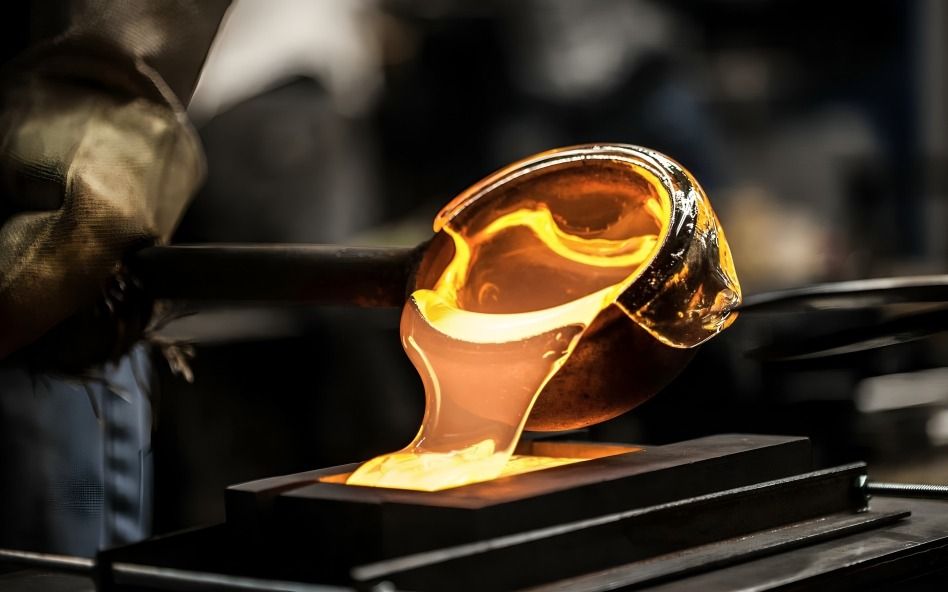
“
Glass is a material with a rich history and a wide array of uses that span from ancient artifacts to modern technology. This article explores 20 critical glass facts highlighting its significance and diverse applications. Understanding these facts will provide a deeper appreciation for glass's role in shaping various aspects of human innovation and culture. 1
1
”
Glass making has a long history that goes back to around 3500 BC. Over the years, the methods have changed from handmade crafts to today’s advanced industrial techniques, leading to many different types of glass and uses. 1

Glass is made by melting silica sand, soda ash, and limestone at high temperatures, typically around 1,700°C (3,092°F). This mixture is then shaped and cooled to form various glass products.
Glass can be recycled indefinitely without losing its quality, maintaining its original properties with each cycle. Recycling glass reduces energy consumption by up to 30% compared to making new glass from raw materials like sand and soda ash. 2
There are several types of glass, including soda-lime glass, borosilicate glass, and tempered glass, each designed for specific applications, from windows to laboratory equipment. 3
Glass is widely used in packaging, such as bottles and jars, because it is non-reactive, preventing chemical interactions with food and beverages. Its inert nature ensures the purity and safety of products. 4
In construction, glass is essential for windows, facades, and interior design elements. It provides transparency and natural lighting, improving the energy efficiency of buildings through insulation. 5
Glass can be colored using various metal oxides, like cobalt for blue and iron for green, allowing a wide range of hues. This technique enables artisans to create intricate stained glass artworks used in cathedrals, homes, and art pieces. 6
Glass transitions from a solid to a supercooled liquid at a temperature known as the glass transition point, usually between 500°C and 600°C, depending on the type of glass. 7
Tempered glass is treated to withstand higher stresses and impacts than regular glass. It shatters into small, blunt pieces, reducing injury risk. 8
Thick glass offers superior sound insulation, making it a popular choice for windows in urban environments, where noise pollution is a concern. This feature helps block out external noise, creating quieter, more comfortable indoor spaces. 9
Glass has been a part of human history for thousands of years, used in various applications, from ancient Roman mosaics to medieval stained glass windows in cathedrals. 10
Special glass plays a crucial role in space technology, including highly durable telescope lenses and satellite windows designed to endure extreme temperatures, pressure changes, and radiation. 11

Borosilicate glass is favored in laboratories and medical settings due to its resistance to thermal shock, which allows it to withstand sudden changes in temperature without cracking.
Glass can take thousands of years to decompose in the environment, with estimates ranging from 4,000 to 1 million years depending on conditions. This long decomposition time highlights the importance of recycling, as reusing glass reduces waste in landfills.12
When regular glass breaks, it often shatters into sharp, jagged pieces, posing significant safety risks. However, tempered glass, which is treated with heat or chemicals, breaks into small, blunt pieces that are less likely to cause injury. 13
Glassblowing and glass sculpting are ancient crafts that allow artists to create intricate designs by heating and manipulating molten glass. These art forms date back to the first century BC, originating in the Roman Empire. 14
Glass is essential in the construction of solar panels, providing a protective layer for photovoltaic cells while allowing maximum sunlight to pass through. Tempered glass is commonly used for its durability and ability to withstand environmental stresses. 15
Glass is the core material in optical fibers, which are used to transmit data at the speed of light across vast distances. These fibers, made from ultra-pure silica glass, play a critical role in modern telecommunications, supporting high-speed internet. 16
Certain types of glass, such as bioactive glass, have unique properties that allow them to bond with bone and tissue, making them valuable in medical implants and regenerative medicine. 17
Glass has been used in architecture since ancient times, with structures like the Roman Pantheon featuring glass in their designs, highlighting its longstanding importance in building history. 18


